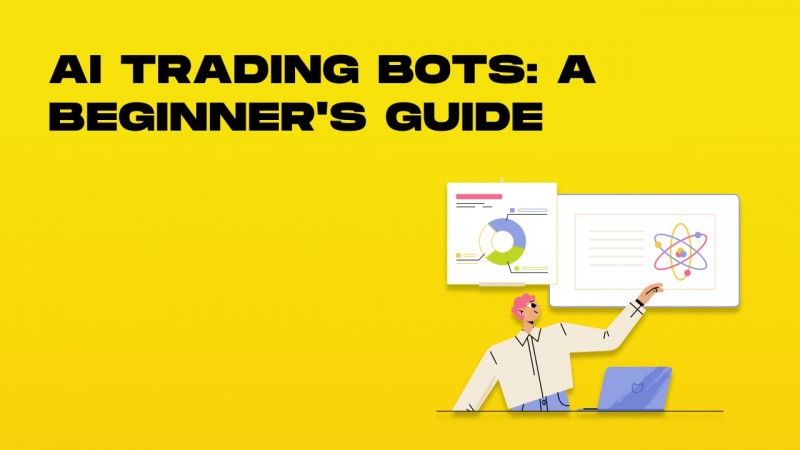When you are evaluating AI trading platforms, compatibility and integration are crucial factors. A platform that integrates seamlessly into your existing tools and workflows will improve efficiency and efficiency. Here are our top 10 recommendations on how to assess the compatibility and integration of these platforms.
1. Check Brokerage Integration
The supported brokers are listed below. Make sure that the platform is integrated with your brokerage or trading account.
Execution of trades: Make sure that the platform supports the direct execution of trades via the broker integrated.
Account synchronization: Find out whether the platform is able to sync the balances of your account, positions and transaction history in real-time.
2. Check the API's availability
API access - Ensure that the platform includes an API that allows developers to build customized tools or automate work flows.
API documentation: Ensure that the API is documented well with use-cases and examples.
Rate limits: Check if the API has reasonable rate limits which can accommodate the amount of usage you're expecting.
3. Assess Third-Party Tool Integration
Popular tools Check to see whether there is any integrations between the platform and tools such as Google Sheets, Excel, or trading robots.
Export and import of data: Ensure that the platform supports easy export and import of data to and from other tools.
Extensions/Plugins: Make sure that the platform is compatible with plugins or extensions to provide additional functionality.
4. Test Compatibility Operating Systems
Desktop compatibility. Make sure the operating system you prefer (Windows, macOS, Linux) is supported.
Mobile compatibility. Check if you can download the app for iOS or Android.
Web-based: If you'd like to be flexible, verify whether your platform can be accessed using a standard web browser.
5. Assess the Data Integration Capabilities
Data sources: Make sure that the platform is able to connect various sources of data, like providers of market data, RSS feeds and sentiment on social media.
Real-time analytics: Make sure your platform supports real-time analysis.
Make sure that your platform supports the import of historical data for analysis or backtesting.
6. Check cloud and on-premise compatibility
Cloud-based platforms: Ensure that the platform can be accessed from any location with an internet connection.
Solutions on-premise. If you're looking to deploy on-premise be sure to check whether your platform supports it.
Check for hybrid options. This is a method that combines cloud and on-premises capabilities.
7. Make sure to check for Cross Platform Syncronization
Device synchronization: Make sure that your platform syncs settings and data across all devices (desktop tablet, mobile).
Verify whether changes made on a device are instantly reflected on another.
Offline access: Verify whether your platform provides limited functionality and data access when offline.
8. Verify the compatibility of trading strategies
Algorithmic trading: Make sure the platform supports algorithmic or automated trading strategies.
Custom indicators: Determine whether you are able to make use of customized indicators or scripts.
Backtesting strategies Check to see if your trading platform supports backtesting with historical data.
9. Assess Security and Compliance
Data encryption: Check whether the platform is using encryption to protect data both in transit and at rest.
Verify that your platform supports an authenticated method that is secure (e.g. 2-factor authentication).
Regulative compliance - Determine if the platform complies applicable laws, e.g. GDPR. FINRA. SEC.
10. Test Scalability and Performance
Scalability is important. The platform needs to be able to handle the increasing volume of data and number of users.
Performance during load conditions: Verify whether the platform continues to be flexible during market conditions with high volatility.
Utilization of resources - Make sure whether the platform is using system resources such as CPU, memory, or bandwidth.
Bonus Tips
Feedback from customers: Read user reviews and testimonials to assess the integration capabilities of the platform.
Trial period: Make use of a no-cost demo or trial to see how the platform works with other processes and tools.
Customer support: Ensure the platform provides a solid assistance for integration-related issues.
With these suggestions you will be able to assess the compatibility and integration of AI trading platforms that predict or analyze stocks and ensure that they integrate seamlessly with your existing systems and enhance your trading efficiency. Have a look at the most popular market ai blog for more tips including ai for stock predictions, stock ai, ai for stock predictions, investing ai, ai investment app, stock ai, AI stock trading, AI stock trading bot free, ai trading tools, options ai and more.

Top 10 Tips On Assessing The Speed And Latency Of Ai Stock Prediction/Analyzing Trading Platforms
Latency and speed are crucial factors when looking at AI stock prediction and analysis platforms, especially for algorithmic traders, active traders as well as high-frequency traders. Milliseconds of delay could influence the execution of trades as well as profitability. Here are the top ten strategies for evaluating latency and speed on these platforms:
1. Real-time data feeds: How can you evaluate them
Data delivery speed Make sure the platform delivers real-time data (e.g. sub-millisecond delay).
Data source proximity - Check to determine if the servers of your platform are close to important exchanges. This will cut down on the time for data transmission.
Data compression - Ensure that the platform employs effective data compression techniques to improve speed of data delivery.
2. Test the speed of execution for trades
Time to process orders: Determine how fast the platform handles and executes trades when you submit an order.
Direct Market Access: Make sure that the platform you are using offers DMA. DMA is a feature which allows you to transmit orders directly to exchanges, without intermediaries.
Examine the execution reports to see the timestamps on order confirmation, fill, and submission.
3. Assess Platform Responsiveness
User interface (UI, or speed of user interface): This is the speed at which a platform's UI responds to the inputs you enter (e.g. pressing buttons or loading graphs).
Updates to charts - Check that your charts are up-to-date in real-time and without delays.
Mobile app performance. If you are using an app designed for mobile make sure it's functioning as swiftly and smoothly as a desktop version.
4. Check for low-latency infrastructure
Server locations: Make sure that the platform uses low-latency servers situated near major financial hubs or exchanges.
Co-location Services: Check if the platform allows co-location. This will allow you to save your trading algorithms in servers that are close to the Exchange.
High-speed network: Determine if the platform utilizes high-speed fibre-optic networks, or other low latency technologies.
5. Backtesting the simulation speed and test backtesting
Check the speed at which your platform is able to process and analyze past data.
Simulating latency: Ensure that the platform is able to simulate trades without noticeable delay.
Parallel processing (or distributed computing) Learn what platforms use parallel or distributed processing to accelerate complicated calculations.
6. The API Latency Measurement
API response time: Check how quickly the platform's API responds to requests (e.g., fetching market information, or placing orders).
Rate limits: Check that the API has reasonable rate limits to avoid delays in high-frequency trading.
WebSocket support: Check whether the platform supports WebSocket protocols to support real-time, low-latency data streaming.
7. Test platform stability under load
High-volume Trading: Create huge numbers of trading scenarios to determine if your platform is stable and responsive.
Test the platform in times when there is a lot of volatility on the market to ensure it is able to handle sudden changes in price.
Stress testing: Determine whether your platform has the tools to test stress-testing strategies in extreme circumstances.
8. Examine Connectivity and Network
Internet speed demands. Make sure that your connection speed is sufficient to match the recommended speed of your platform to ensure the best performance.
Redundant Connections: To prevent interruptions, make sure that the platform is able to support redundant internet connections.
VPN latency If you are using a VPN to connect, make sure that it doesn't cause significant delay. Also, make sure the service offers alternatives.
9. Make sure you are aware of features that speed-optimize your computer.
Pre-trade analytics - Ensure that the platform you choose to use has pre-trade analytical tools to optimize order routing.
Smart order route (SOR) You can check to see whether SOR is used by the platform to identify the most efficient and most cost-effective execution locations.
Monitoring of latency: Ensure that your platform permits you to track and analyze your latency on a live basis.
Benchmarks for User Feedback Review
User feedback: Use user reviews to determine the performance of the platform with regard to speed and latency.
Third-party benchmarks by third parties. Find benchmarks that are independent, or reviews that compare a platform's speed with other platforms.
Case studies: Check if the platform provides testimonials or case studies highlighting the platform's low-latency capabilities.
Bonus Tips
Trial period: Use the demo or trial version for free to evaluate the platform's performance and latency in real-world situations.
Support for customer - Make sure there is support available to address issues relating to latency, optimization or other issues.
Hardware requirements. Check if the system is compatible with specific hardware like high-performance computers.
With these suggestions that you will be able to assess the performance and speed of AI platform for predicting or analyzing stocks and ensure that you select the best platform for your trading needs and minimizes delays. Low latency is crucial for high-frequency traders and algorithmic traders. Even small delays can have a huge impact on profits. Have a look at the top rated your input here on best ai for stock trading for site examples including ai options, AI stock investing, free ai tool for stock market india, ai tools for trading, how to use ai for stock trading, stock trading ai, ai share trading, best stock prediction website, ai options trading, can ai predict stock market and more.
